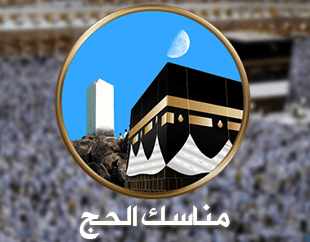Hajj has magnificent and glorious rituals performed by the pilgrims of the Sanctified House Of Allah (Al-Kaaba) every year in different stages and in different places of Mecca and its suburbs, following the Sunnah of our Prophet Ibrahim (pbuh) and in compliance with the order of Allah the Almighty and as a sign of the glorification of His rituals, as in Allah’s saying in Surat Al-Hajj: “ Having said that, if one observes the sanctity of the symbols of Allah, then such things emanate from the piety of the hearts.” (22.32).
These rituals begin with Ihraam, which is the intention to enter into Hajj. The reason why it is called Ihraam is attributable to the temporary prohibition of a number of permissible acts for pilgrims until the end of the rituals of Hajj. The intention is the cornerstone of the ritual of Ihraam, but it requires special actions, a man in the state of Ihraam must not tie any knots or wear any stitched items, and he must shave the head, etc...
After the completion of the Ihraam ritual, pilgrims go to the second pillar of the Hajj, which is Tawaaf al-Ifadah (circumambulation of the Kaaba); it is performed on the day of Immolation (Yawm Annahr) in Makkah after Ifadah from Mina. The Tawaaf is going around the Kaaba seven consecutive times with the intention of worshiping Allah the Almighty, starting with the black stone and ending there.
Then pilgrims go to the mountains of Safa and Marwah, and they travel back and forth between them seven times, starting from Safa and ending with Al-Marwah. This ritual finds its origin in the time of Prophet Ibrahim (pbuh), where his wife Hagar was the first to travel back and forth between Safa and Marwah searching for water for her son Ismail (pbuh). In honor of this great lady, Islam has made this ritual one of the pilgrimage (Hajj).
With the completion of the Sa’y (travel back & forth) between Safa and Marwah, Muslim pilgrims will make their way from Mina to Mount Arafat. This occurs on the ninth of Dhu'l-Hijjah, where the pilgrims spend their day in Mount Arafat saying Talbiyah until sunset. This day is characterized by the Speech (Khutbah) delivered by the Imam to the pilgrims, who pray behind him Dohr and Asr combined and shortened with one call (to prayer) and two prayers.
After the stay in Arafat, the pilgrims complete their journey of faith in the holy places by proceeding to Muzdalifah, located between the sacred places of Mina and Arafat. Where pilgrims spend their night there, they perform the prayers of Maghreb and ‘Isha combined and shortened, then they collect the pebbles in preparation for stoning of the Devil (Ramī Al-Jamarāt), then they proceed to the Holy place of Mina the next morning.
And before the sun rises on the tenth of the month of Dhu Al-Hijjah, which is the day of sacrifice, Pilgrims proceed to Mina to throw the Jamrat Al- Aqaba between the periods of Forenoon and Noon, where they throw seven stones, as they repeat the words of Takbeer. After the stoning of the Devil, Pilgrims devote themselves to the slaughter of sacrificial animal, and then shave their heads or cut their hair to benefit of Tahallul Al-Asghar (first removal of Ihraam), and thus everything is permissible for them except women.
After the moving from Mina, the pilgrims have a last step to complete the pilgrimage before returning home. This step is Tawaaf Al-Wadaa’ (Farewell Circumambulation) that is performed in the same day for those who rush to travel back home soon, otherwise, this act should be postponed to the last day of the Pilgrims’ stay in Mecca. In this case, Tawaaf Al-Wadaa’ is performed in the form of Tawaaf Al-Ifadah. After completing it, the Pilgrims are prohibited from engaging in anything other than traveling.
Written by: Amine Hilal


Comments